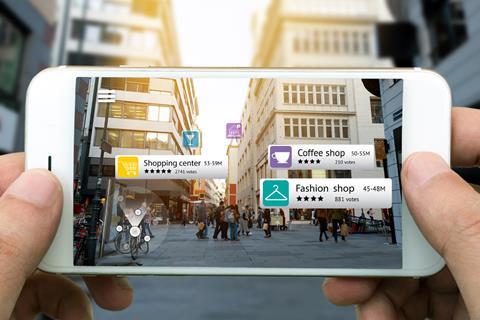
Isabel Rocher has a unique perspective on the disruptive impact of e-commerce on supply chains and packaging. Before joining DS Smith as head of e-commerce solutions in 2016, she worked as European head of packaging and shipping at Amazon. Isabel shares with Tim Sykes her insights into the still fluid omnichannel landscape, and the challenges, solutions and ultimate opportunities that are only beginning to come into view.
Tim Sykes
DS Smith must have been delighted to attract you across from Amazon two years ago. Having worked on e-commerce packaging as both a supplier and user, how would you characterise the chief pressures and demands of the market?
Isabel Rocher
E-commerce is a very fast-paced environment with a high level of churn and multiple routes to the end consumer. The route to the consumer is very different now to five years ago: we’ve seen a large increase in private delivery firms and delivery methods becoming part of the landscape. As a whole, packaging performance in e-commerce is far from optimised: it hasn’t caught up with all these challenges and variables. The packaging is often too large, meaning boxes can be half empty, and do not offer appropriate protection to the contents. The market demands new solutions that are easy and fast to assemble, protect products more effectively, and are more cost and resource efficient.
Tim Sykes
As the e-commerce market matures, how do you see it evolving and what requirements does this pass on to packaging suppliers?
Isabel Rocher
Everyone has heard a lot about the rise of the omni-channel environment for some time. It’s predicted that e-commerce as a distinct channel will become extinct, replaced by a joined-up online/offline retail model. There’s certainly a huge opportunity for brands to reach consumers directly, exploring their own routes to market, using new technologies and supply chains. I think we’ll see a revolution in retail over the next five to ten years, mirrored by changes in the packaging both that’s sent directly to consumers and to stores. This will be influenced by the millennial generation and their feelings towards overfilled stores and half empty packaging.However, the situation is currently far from achieving that stage of an optimised, lean, integrated supply chain. Different routes to this goal are currently being mapped out and no single wrong or right answer has emerged yet. There are major inefficiencies and challenges. At DS Smith we learn with our customers to help them optimize their supply chains. This often produces a leaner process due to a well-adapted packaging offer.

Tim Sykes
How does this feed into DS Smith’s innovation strategy?
Isabel Rocher
Omnichannel also means the packaging industry needs to evolve and adapt. As part of the innovation team, I can say we aim to bring one or two innovations to market each year. In May, we’ll be launching a tool to optimise a customer’s existing suite of packaging solutions. We’re also actively exploring technologies that deliver connectivity in boxes. Besides this there’s always work ensuring we offer a flexible packaging portfolio with optimised performance. We have a five-year e-commerce innovation plan – there’s lots in the pipeline for the next few years.
Tim Sykes
Looking slightly beyond the horizon of the present marketplace, are there any new dynamics or disruptive technologies you expect to see making significant changes?
Isabel Rocher
One can never know 100 per cent what will happen but we talk to customers and the whole supply chain about emerging technologies and demands. The big challenge we identify at present is around connectivity: joining-up the data across the supply chain. This is something we expect to be solved in the next three to five years. We envisage consumers being able to track, similar to a flight tracker, the exact location of their parcel in real-time. They will be able to use an app to select a point of delivery nearby to their current location at short notice. This will require flexibility in the supply chain. The key to this is data, and we can add value by developing connectivity on our boxes, along with related data support services.
Tim Sykes
In practice to what degree brands and shops that operate in both physical and online retail environments integrating their supply chains and packaging? Is there pressure to create packaging that performs in multiple environments or, on the contrary, diversification of packaging formats for different channels?
Isabel Rocher
I think it’s a bit of both. Some packaging diversification will develop with the evolution of omnichannel. There will have to be a multi-faceted approach, with a focus on providing the appropriate level of protection, avoiding overpackaging and optimising costs in transit packaging for each retail channel. The change within the packaging industry is likely to take place over the next three to five years – in a phased approach due to the investment in machinery. The same process could go one step further with the emergence of primary packaging, for goods such as toys and electronics, going directly along the respective channels to consumers and stores.
Tim Sykes
There are discussions about the desirability of creating a unifying branding platform / medium that joins the dots between the very different experiences at physical point of sale, online ordering, and unboxing at home. Often these discussions revolve around the wide potential of digitally-enabled technologies. What is your vision of the opportunities to connect consumers to brands that they might interact with in so many different ways? What role can packaging play in this?
Isabel Rocher
There are several different ways of addressing the question of digital connectivity and multi-channel. I’ve already mentioned the way making boxes connective can help integrate the supply chain and make it lean. But it will also enable the customer unboxing experience to further evolve and enhance the brand message. Already today we’ve seen things like assembly information and much of the paperwork removed from the product box, in favour of downloads and apps. At the moment this is more on the level of QR codes but augmented reality is likely to come next. The same evolution is likely to occur in the physical retail environment.
However, the area of true innovation is connecting up data. We’re already becoming acquainted with technologies such as Alexa. With increasing connectivity, it could soon be that the fridge orders your shopping, which can then directly track the box that contains your order. This represents an opportunity for brand owners to become independent players within the market, directly interacting with consumers. These connective technologies also enable them to bridge the online and bricks-and-mortar retail experiences.
The touchpoint for all of these channels, however, is packaging.

















